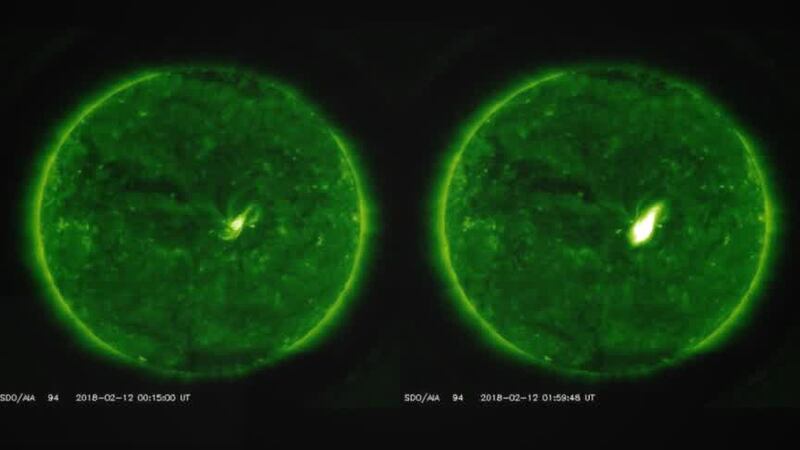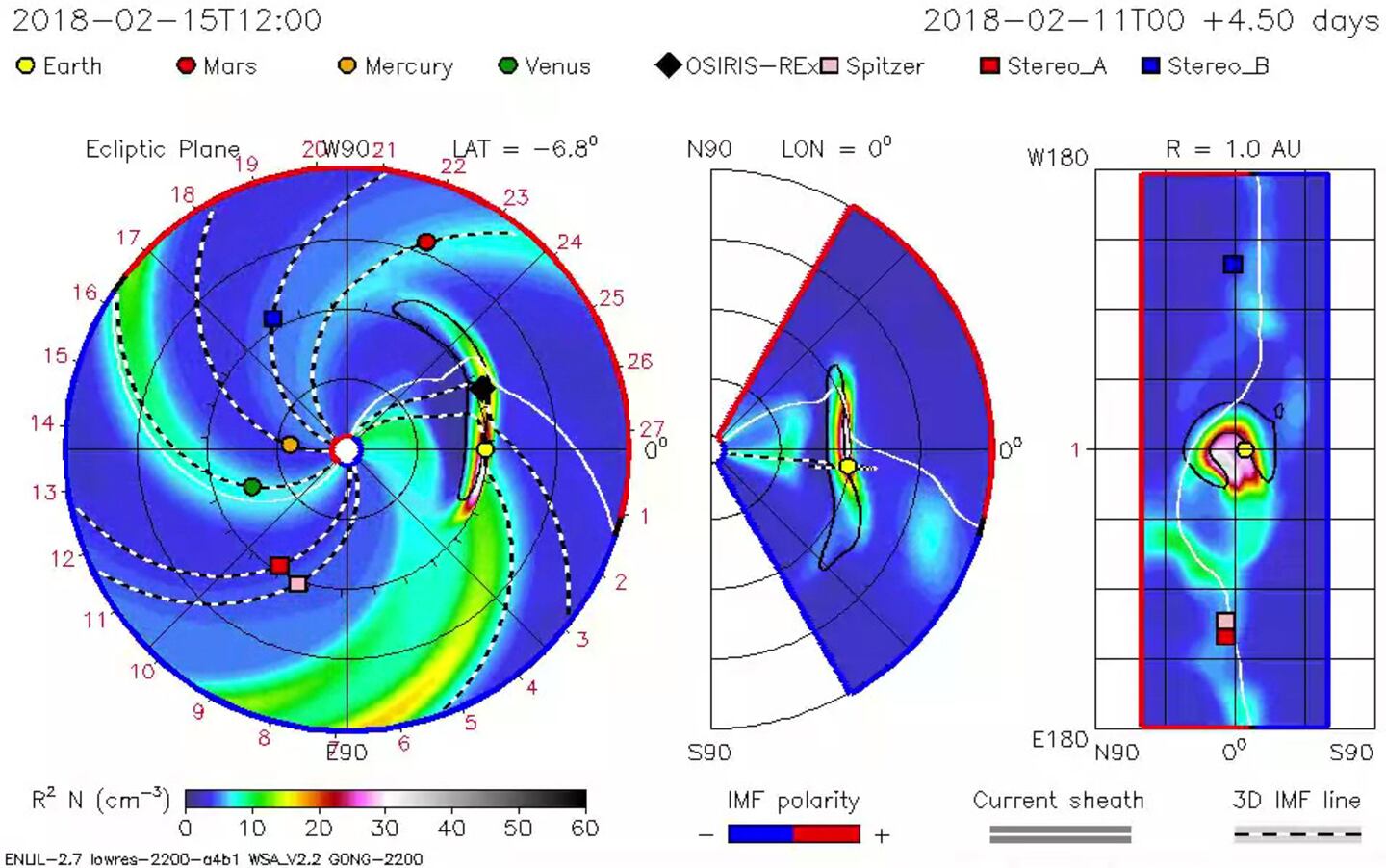A solar storm could have an impact on Earth this morning.
NASA’s Solar Dynamics Observatory Satellite showed a coronal mass ejection occurring from Sunday night into Monday morning.
This solar flare is forecast to send a solar storm towards Earth, and according to computer models, the storm could impact around 8 a.m. Thursday.
The solar flare, classified as a long-duration C1.5 has warranted a G1 (Minor) Geomagnetic storm watch for Feb. 15, 2018.
While this storm is not expected to be large compared to past solar storms, it could still have an affect on Earth. Here are some things that COULD happen as a result of this storm:
- These storms can cause weak power grid fluctuations.
- Minor impact on satellite operations is possible.
- Aurora possible in the mid-latitudes where skies are clear. This is not likely for us due to a large amount of cloud cover and the sun coming up around that time, but those on the west coast of the U.S. may see them.
- Storms of this size can have an effect on migratory animals in northern regions, most likely Canada and points north.
>> WHIO Live Doppler 7 Interactive Radar
Solar storms of this scale do happen fairly often, though not that affect Earth. Data suggests storms like this occur approximately 1,700 times per 11 years (per solar cycle) or 154 times per year, but rarely does it actually hit the Earth.
Most of these storms eject from the sun into open space.







